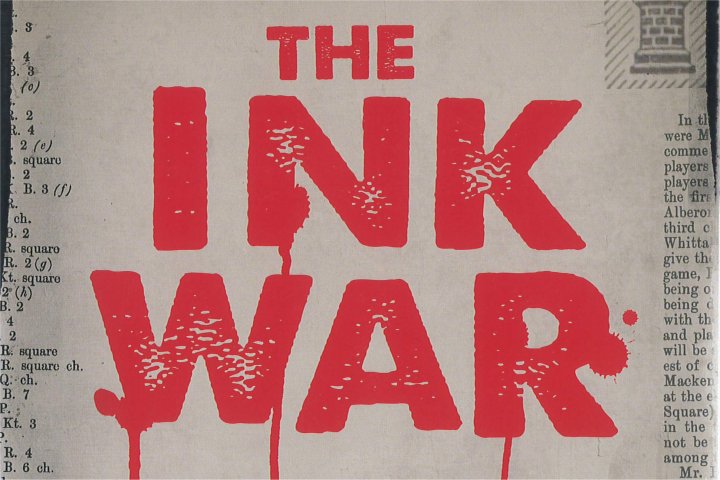Victory in the London tournament of 1883 was easily the greatest success in the career of Johannes Zukertort (1842-1888). In a marathon that featured almost all the leading players of the day, he finished three(!) points ahead of William Steinitz, the man who would be too strong for him three years later in the first official World Championship match. Zukertort’s sweeping win in London was all the more amazing given the fact that he lost his last three encounters. Why? Sheer exhaustion? Illness? Willy Hendriks studied the games and comes up with a remarkable alternate explanation.
The mystery of Zukertort’s breakdown
How extraordinary was his ‘sudden’ collapse in London 1883?
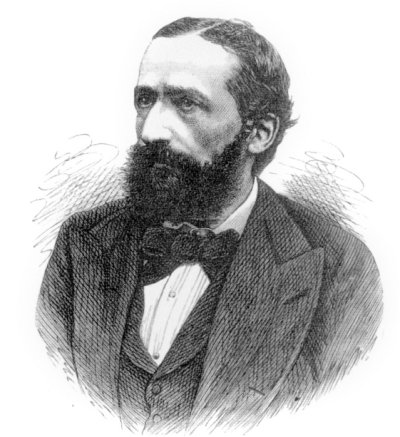
The greatest tournament success of Johannes Zukertort remained inextricably linked to one of the biggest mysteries in his career.
Johannes Zukertort’s victory in the tournament in London in 1883 was a truly splendid result. In a double-round elite event with 14 participants, he scored 22 out of 26, finishing a full three points ahead of runner-up William Steinitz.
In fact this achievement ultimately led to the first official match for the world championship three years later between the same protagonists. The outcome in London had shaken Steinitz’s position as undisputed number one and many now saw Zukertort as the best player, who deserved the title of World Champion. It took almost three years for that match, played in three cities in the United States, to come about and that delay did not favour Zukertort, whose health was frail. Steinitz was probably the stronger player anyway, but Zukertort’s total collapse in the second half of the match was certainly due to his poor health. He died two years later, not yet 46 years old, and a better example of a player coming out of a match a broken man is hard to find in chess history.
Zukertort’s progressive score in London was even more impressive than his final total, since he had accumulated an amazing 22 points after 23 rounds. It should be noted, however, that draws did not count and were replayed (see sidebar). In Zukertort’s case this happened seven times. Tragically, Zukertort lost the last three games, which cast a serious shadow over his victory. Two of his last opponents were lesser gods who finished in the bottom of the table, and in all three games he had had good to winning positions.
Various explanations have been put forward for what has become known as ‘Zukertort’s breakdown’. Did his health problems play a part, possibly in combination with the exertions of a tournament that lasted almost two months – or with the ‘medication’ he was taking? Or was it the relief he felt when it was clear that he could no longer be caught that undermined his strength?
Zukertort ‘had been compelled to drench himself nightly with a most virulent poison to keep up his failing energies to the mark’
According to the tournament book, Zukertort ‘had been compelled to drench himself nightly with a most virulent poison to keep up his failing energies to the mark. But Nature would not submit to any such dictation, and at last the long threatened breakdown occurred, fortunately when it was too late to deprive the champion of the Tournament of his well-merited honours’.
Jimmy Adams writes in Johannes Zukertort, Artist of the Chessboard (New In Chess 2014) that it was known ‘that Zukertort not only partook of “virulent poison” to overcome pain, but was also partial to opium.’ The two need not have been different things. In one of their controversies Steinitz alluded to Zukertort’s ‘sleeping draughts’, mentioning in passing ‘a dose of analytical laudanum’ (an opium-based drug). In London in those days, opium was not an unknown drug and even Sherlock Holmes was once spotted in an opium house.
What’s more, during the World Championship match three years later, Zukertort told to a reporter that he had suffered from sleeplessness in the London tournament, had taken aconite, ‘braced up’, got so far ahead that he could afford to lose the three remaining games, stopped the aconite, collapsed and lost those games but won the tournament. Aconite is indeed a rather toxic substance that, like laudanum, was used as a painkiller and a sleep aid.
All these factors: fatigue, early relaxation, health problems and the poisonous medicine (probably some opium-based product) might have played a role but if you take a look at Zukertort’s complete tournament, I believe an alternative ‘explanation’ will present itself.

On May 5, 1883, The Illustrated London News printed a collage of drawings by Edward Henry Corbould that vividly captured the trials and tribulations of the chess masters.
The disastrous finish
Let’s start with Zukertort’s last three games. Alexander Sellman lost a piece in the opening, but unexpectedly got so much compensation in return that Zukertort soon miscalculated in the complications. After that, Sellman (one of the tail-enders) made no more mistakes and finished the game with a little combination.
28.♖xg7! ♖xg7 29.♕f8+ ♖g8 30.♕f6+ ♖g7 31.♖d7 1-0.
Until his game against Zukertort, James Mortimer had only scored one point in 24 games, against Skipworth, who withdrew from the tournament one round later ‘on doctor’s advice’, giving almost all participants a free point in the second half.
Mortimer, born in America, had a multi-faceted and turbulent life. He was a diplomat, journalist, playwright and newspaper owner, and was even imprisoned for a ‘defamatory’ article he wrote. For some time, Steinitz had a chess column in his newspaper. He was an enthusiastic chess player, but actually too light for this company.
Mortimer got into the following mess from an Evans Gambit and seemed on his way to yet another defeat.
White can win in many ways, but the simplest one was to deploy his last inactive piece with 23.♖fd1, e.g. 23...♗c6 24.♖xd7+! ♗xd7 25.♘d5+ or 23...♖bd8 24.♕h3, with a devastating attack. Zukertort, however, went for glory and sacrificed a rook with 23.♖xd7+ for unclear compensation and later even gave away the draw. He probably thought he would win immediately after 23...♔xd7 24.♕f7+ ♔c8 25.e6 but maybe he had missed that Black could now stay in the game with 25...♗a6!. In the remainder of the game, Mortimer excelled himself and finally brought the point home.
Reportedly, Zukertort ‘was so incensed at losing to James Mortimer that he overturned the board and threw the pieces onto the floor.’
The first of Zukertort’s three consecutive defeats, a replay from an earlier draw, is the most curious one. That qualification also applies to the reasons given for Zukertort’s miss, including the one by James Minchin in the tournament book.
Thanks to his passed b2-pawn, Black has the win within reach, despite the double attack after White’s last move. After 25...♕d1+, White would have nothing better than retreating with 26.♖e1 (because 26.♕f1 ♗xf2+! loses on the spot), and after 26...♕d2 next, Black has solved the problem of the double attack, and his extra pawn on b2 will eventually bring the decision. Did Zukertort, as has been suggested, reverse the moves and play his second move first? In his notes in the tournament book Zukertort limits himself to the remark ‘a mental aberration’, but he doesn’t indicate what exactly he had missed.
There followed 25...♕d2? 26.♖xh4 This is possible now. 26...♕c1+ 27.♕f1
In his introduction to the tournament book, Minchin writes about this game that ‘Zukertort, under the extraordinary hallucination that he had already doubled his Rooks on the Queen’s file, went in for what he believed to be an immediately winning combination’. That must be about this moment and Black’s next move, but it seems to me a very unlikely train of thought. You must have used some very potent stuff to play ...♖d8-d1 and at the same time believe that you have already doubled on the d-file.
By the way, Black was in such a good position that he could still have crawled back here with 27...♕g5+ 28.♖g4 ♕xe5, when he is a piece down, but with sufficient compensation. This leads me to suspect that Zukertort was smoothly continuing his planned combination and that he had missed exactly what happened next, viz. the somewhat hidden X-ray defence.
27...♖d1?? 28.♕xd1(!) 1-0.
+++++++++++++++++
Different times
London 1883 was one of the first great tournaments of the modern era. Fourteen of the best players of the day took part and... took their time. Zukertort played his first game on 26 April and his last game on 15 June.
Most of today’s rules were already in force (even ‘advanced’ rules such as the 50-move rule), but a lot was quite different, as can be gleaned from the monumental tournament book that appeared only months after the event.
Most notably, drawn games had to be replayed and if the game ended in a draw again, it had to be replayed once more. Only after a third draw, the result would really be a draw, for which both players received half a point.
The playing sessions started at noon. At 5 p.m. there was a two-hour break and then there was another session till 11 p.m. ‘Stop-clocks’ were used and the time limit was 15 moves an hour.
Mondays, Tuesdays, Thursdays and Fridays were fixed for play. Wednesdays and Saturdays were ‘bye-days’, when adjourned games could be finished and drawn games replayed. Sundays were free days. Because of these rules, the exact chronology of games and results is often not easy to determine.
+++++++++++++++++
‘Soundness and brilliancy’
Looking at these three fragments for a long time will probably not help to answer our main question. It is enlightening, though, to play over all Zukertort’s games from this tournament. The British Chess Magazine wrote that ‘Zukertort’s play throughout was characterised not only by extreme daring, but by soundness and brilliancy’. That was the general tenor of the reporting at the time, and it has been repeated many times since. It provides the story with a nice contrast – the brilliant series, followed by the sudden breakdown.
There are indeed a few gems, especially his masterpiece against Joseph Blackburne, but after replaying all games one gets the feeling that the fact that Zukertort managed to score 23 out of 24 is no less amazing than his 0 out of 3 finish.
The following more or less chronological selection of a few remarkable moments paints a nice picture of both Zukertort’s (sometimes perilous) exploits during this tournament and of the general tactical level of that time.
This is the game from the first half of the tournament against Mortimer and it is clear that White’s opening did not quite work out. White cannot complete his development with 25.♔h2 in view of ...♗xh3, so, somewhat typically, Mortimer now seeks refuge in a trick, which is not only rather conspicuous but also unsound.
25.♖e1? ♖xb3 26.♖xe6 ♖bxf3! The simple refutation. After 27.gxf3 ♕xe6 Black had an extra pawn and a beautiful position.
The game against Mason in the next round was an enormous spectacle with ever-changing odds. It is worth playing over in full, but three moments deserve special attention.
White hasn’t got much of an attack going on the kingside, but after Black’s last move his complete queenside is about to crumble. After 18.e4 axb2 19.♖c2 ♗a4 White had lost an exchange, and that’s without mentioning the bunch of passed pawns on the queenside.
However, Mason managed to make something out of his attack and about 10 moves later the following exotic position was arrived at.
Black, a piece down now, continued with the beautiful 30...c2! and now 31.♗xa2 bxa2 would have resulted in a dream position reminiscent of the famous endgame from the match between LaBourdonnais and McDonnell.
After 31.♗xc2 simply taking back on c2 would have given Black a winning advantage, but after the zwischenzug 31...♘e6? there came 32.♕xd5 and suddenly White had the upper hand. But the battle continued. Zukertort came back, and a draw seemed the most logical outcome – until Mason made the final mistake.
There followed 57.g3? ♘xg3! and after 58.fxg3 Black has 58...♕b6+ 59.♔h2 ♕xb2. White plodded on for some time after 58.♕d3 ♘f5 but couldn’t avoid defeat in the end.
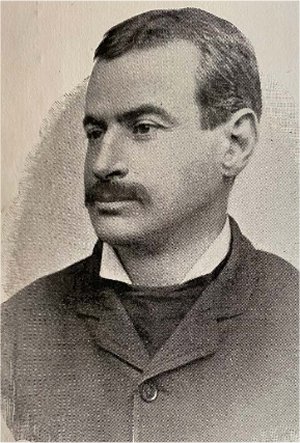
Having lost a wild up-and-down game due to a blunder in their first game, James Mason fell into exactly the same trap in his second encounter with Zukertort.
Funnily enough, Mason fell into exactly the same trap in the second half of the tournament.
White attacks the black rook. After 36...♖b2 Black might be slightly better, however, there followed 36...♖c2? 37.♖xh5+!. After 37...gxh5 38.♗d3+ White regains the rook, but after the game continuation 37...♔g8 38.♖h3 White was a healthy pawn ahead.
Tactical skills
These small tactics were often missed in those days. Compared to our time, tactical training opportunities were minimal. Today’s diligent students solve more tactical exercises in a day than the old masters did in their entire lives. Zukertort’s tactical skills were greater than those of most of his opponents and that earned him many points. For example in his first game against Mackenzie, against whom he failed so badly at the end of the tournament.
White probably wanted to keep the knight on f6 pinned, so he played 10.♘h4?. That brought a tactic in the position which any strong contemporary player would spot immediately, but which apparently wasn’t in Mackenzie’s standard bag of tricks. Zukertort was alert and won a healthy pawn with 10...♘xh4 11.♗xh4 ♘xe4!.
The ♘g5 affair
The most that can be said of the previous fragments is that Zukertort couldn’t complain about the winds in his sails. That qualification falls short of the following fragment – if it really happened that way!
Black has grabbed a pawn on the queenside, but White still has some chances against the black king. In reaction to White’s last move, it doesn’t seem a bad idea to bring back the queen to the defence, which Zukertort did with: 22...♕e6??. This gave White the opportunity to end the game immediately with 23.♘g5, when mate or the loss of the queen is unavoidable. Skipworth, however, continued with 23.♖a1??.
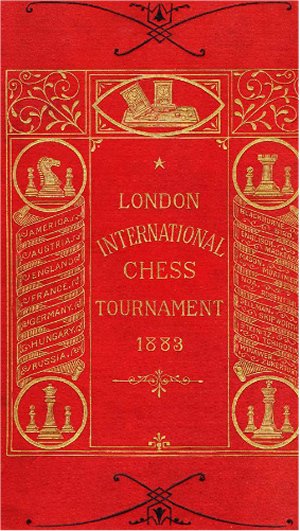
The ornate cover of the tournament book listed the names of the players and the countries they originated from. Collection David DeLucia
This ‘♘g5 affair’ is surrounded by several unsolved riddles, as described in Edward Winter’s Chess Notes. For not only did both players miss this possibility during the game, afterwards they did not see it either. The numerous spectators in the tournament hall did not see it and even in his analysis for the tournament book, Zukertort is silent about this moment. Only months after the publication of the tournament book did an attentive reader come up with the move ♘g5.
To complicate matters even further, Winter tells us that Zukertort later denied that the move ♘g5 had been possible: the notation in the tournament book would have been incorrect. In contrast, Tim Harding in Eminent Victorian Chess Players quotes Skipworth himself, who admitted that ♘g5 would have won straight away, and that ‘it is difficult to account for such blunders by experienced players’. Admittedly, this was five years after the tournament, but could he really have misremembered it?
By the way, the fact that these were almost incomprehensible blunders is in itself not an argument against the idea that they really occurred. Having seen countless games from that era, I am not easily surprised, and later on in this article we will come across a few more remarkable examples. Apart from that, I also know from personal experience that on the topic of ‘incomprehensible blunders’ much is possible!
For the time being it is, as far as I can see, commonly believed that the game went as shown above. To begin with because it is difficult to come up with a plausible alternative that combines with the continuation of the game, which was 23...♖d5 24.♕d3 a5.
Nevertheless, I would like to make an attempt.
Instead of 22.♕g6, White could also have played 22.♕d2. Not a very enterprising move if you have just lost a pawn, but it does cover the b-pawn. After 22...♕e6 23.♖a1 ♖d5 24.♕d3 we would be back in the game according to the tournament book. The move ♖a1 is a bit puzzling in this alternative, but that also goes for the ‘official’ move order. The appeal of this version is that only one move needs to have been copied incorrectly from the score sheets.
However, in search of something completely different, I recently happened to come across the exact quote from Zukertort (in the New Orleans Times-Democrat of June 29, 1884), in which he talks about ‘several moves, as printed in the tourney book, being incorrectly given’. That might indicate that in this position, instead of 22.♕g6 (or 22.♕d2), White might have started with 22.♖a1 (a plausible move with the queen still on a2), with the little trick of 22...♕xa1? 23.♕h5+! in mind – maybe rather sophisticated for Skipworth, but not inconceivable. After 22...♕e6 23.♕g6 the move ♘g5 is threatened, so that makes 23...♖d5 a logical move as well, and then we are back in the game.
This is a very plausible move sequence, and although it is not very convenient for the story I am telling here, I do not want to completely rule out the above version. That he might have played (smoothly or not) 22...♕e6?? does not seem inconceivable, but that he would not, to his horror, immediately see the move 23.♘g5, is hard to imagine. Well, we’ll probably never know, unless the game scores are still yellowing in an attic somewhere.
Arch-enemy Steinitz
Until the final rounds, Zukertort lost only one game – in the first half against his arch-enemy Steinitz. In the second half, he managed to take revenge. In that game, Steinitz came out of the opening on top, which he emphasized in his later analysis, but Zukertort completely dismissed that verdict in his own subsequent analysis. Steinitz felt so strongly about this that years later, when writing an article on the occasion of Zukertort’s death, he returned to it and used the move 10...bxa4, which was the subject of the discussion, as an example of how little Zukertort understood about modern chess. Then, of course, the latter could no longer reply.
In that first game, however, Zukertort dug his own grave, and this time the opponent was alert.
The position reveals that a few things have already happened in this game. After the solid 30.♖g1 everything would still be open, although the engine prefers White.
Instead there followed 30.♖xe4+? ♕xe4, although it was not so difficult to see that the move Zukertort was counting on to prevent the mate, 31.♕xa7, would fail to 31...b6 and White could resign.
Let’s conclude this review of Zukertort’s adventures with his games against Samuel Rosenthal, who just like Zukertort was born in Poland.
The black position is already close to critical, but Rosenthal apparently thought that White’s last move, 19.♖d1-d6, had wrongly left the b-pawn en prise and played 19...♖xb4?. The reader can probably figure out for himself what small tactic now netted White an exchange.
Their game from the second half presented a very different picture. Chaos on the board, but closer inspection learns that Black’s position is considerably looser than White’s. Very strong would have been the double attack 24.♕e4!, as Zukertort himself later pointed out, and the black position collapses. White went for 24.♘d6+, missed a number of chances later on and eventually lost.
In Zukertort’s other games, too, a lot happened, including a few narrow escapes. Of course, he also played a number of very strong games, for example twice against Chigorin and twice against Blackburne, and I don’t want to claim at all that his victory was not fully deserved.
But to explain what happened to Zukertort in those three final rounds, it is not at all necessary to assume that he had completely collapsed around that time. Those three games perfectly fit the picture of his whole tournament and the tactical level of that time. Whereas Zukertort had previously had the Fates on his side, in those three final games the dice rolled the other way. Zukertort’s points matched his performance quite well, I would say – somewhat curiously distributed alright, but that could be attributed to chance.
Chigorin’s disastrous finish
For a somewhat similar case, we can look at two of Chigorin’s games from the final stages of the tournament.
White has beautiful compensation for his sacrificed piece. Bird continued with 27...♘a6 – there doesn’t seem to be much else – and now White could have taken a third pawn with 28.♖xc6 while Black still cannot disentangle himself (for example 28...♔g7 29.♗d3!). However, there followed 28.♗d3?? and that this really happened we can safely assume, because the tournament book comments: ‘A remarkable blunder, the only instance of a piece left actually en prise in the Tournament.’ After 28...♘xc7 White resigned.
By the way, the tournament book gives 28.♗d8 as the move played, which is, of course, impossible, but this is why it ended up in the ChessBase Megabase as 28.♗e8, which really would have been an absurd move. The processing of the game scores was human work, and these kinds of mistakes occurred only too often, but it does indicate that the earlier fragment Skipworth-Zukertort may indeed have gone differently than in the tournament book.
In view of the remark in the tournament book that only on one occasion a piece was left en prise, I cannot stop myself from giving the following example that tops this blunder.
Although White is already in bad shape, the end came surprisingly quickly after 20.♕c2?? ♘xc2 0-1.
‘This was one of the games played in a late stage of the first round, when in fairness to Mr. Skipworth it should be stated that he was too unwell to play even fairly’, says the tournament book. For those who likewise consider moves as a kind of medical indication, it may be reassuring to learn that the white player lived on for many years after this tournament.
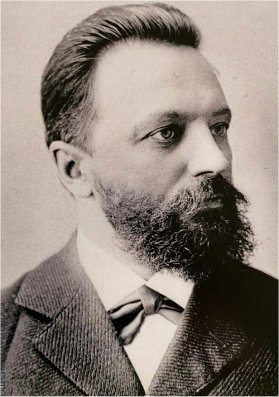
Russia’s Mikhail Chigorin also had problems in the last rounds and missed out on a considerable amount of prize-money. Collection David DeLucia
In the final standings, Mikhail Chigorin was half a point behind the winner of the third prize, Joseph Blackburne, so that slip against Bird had been an expensive one. The difference between the third and fourth prize was thirty pounds, a fair sum in those days. Chigorin only gave away his chances for that prize in the final round.
With the splendid move 31...♘h1! Black has just delivered the decisive blow. White gave a few last checks with 32.♕d8+ ♔h7 33.♕d3+
and now Black can easily get out of check in two different ways, but not with the incomprehensible 33...f5?? because after 34.♕xf5+ Black suddenly found himself a pawn down in an endgame which he later lost.
Miraculous or incomprehensible
We could speculate, as we did with Zukertort, about what happened to Chigorin in the final stages of the tournament. Regarding Chigorin’s ignominious defeat to David Janowski in the penultimate round of the top tournament in Hastings, 12 years later, with final victory within reach, it has been suggested that he had started celebrating a bit too early. Was something similar the case here, or did he perhaps accompany Zukertort on his ‘medicinal’ evening programme?
In the same way, we could look at the reverse case of Mortimer, who started the final rounds with 1 out of 24 (plus a few draws that did not count) and then suddenly beat the top players Zukertort and Chigorin. Did he, in some sort of similar way, suddenly ‘get inspired’? Those two games we have already seen, so there is no need to look for special explanations.
Nor do we need to do so for Zukertort or Chigorin, however miraculous or incomprehensible some moves may seem to us. In chess history, the image is often presented that the old masters were tactically very strong but positionally still in their infancy. In reality, the developments in both areas or on both sides of the scale were much more balanced. The players of that time still had a world to discover, not only at the positional level but certainly at the tactical level as well, and they did so with ups and downs. The fact that I find some delight in the latter is therefore partly due to jealousy. Nowadays, we see all the possibilities in a position far more clearly, but the price we pay is that there are no more new worlds for us to discover.

This article is an adaptation of a chapter of Willy Hendriks’s book The Ink War, Romanticism versus Modernity in Chess (New In Chess 2022).
Republished with kind permission.
Links
